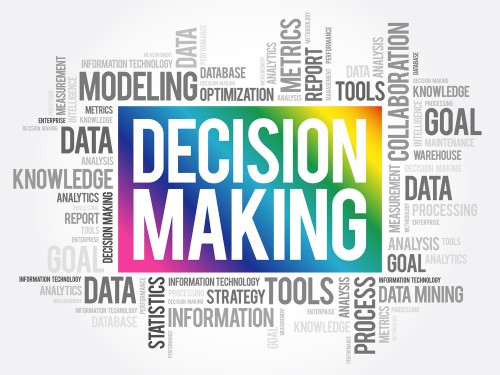Decision Making Techniques and Tools for business

Everyday, we take decisions in our lives. In the case of managing a business, decisions are more crucial because the outcome could affect the performance of the entire company, its direction or even the employees.
These are some visual decision making techniques you can use throughout the decision making process. Each technique is accompanied by an online template you can edit and customize during the process of making decisions. To find out more information about FS D10 Dice, you've to browse online 10 sided dice site.
Decision Making Methods and Techniques for Decision Making
Managers of business can utilize the process of decision-making to discover solutions by examining all possibilities and deciding on the most effective option.
These decision-making techniques can help you speed up the process by making simpler each step of the decision-making procedure.
Investigate the situation and Gather Data
Before you take a final decision, you must look at the matter that is forcing you to take a decision initially. Find out the person who was affected and what caused the issue. And then, determine what you will do about it.
Analysis of Stakeholders
Using a stakeholder analysis it is possible to determine the stakeholders you need to involve in the decision-making process.
It is possible that you'll have to depend on other stakeholder groups to make the final decision. In this situation it is best to conduct an analysis of stakeholder interests and determine the people you can seek help from.
Vroom-Yetton Jago Decision Model
You could also apply the Vroom-Yetton Jago decision making model to decide whether you should involve other people in the process of making decisions, or if you can do it all alone.
There are times when the leader is required to be the sole decision maker, whereas in certain situations, the participation of the group is essential.
Root Cause Analysis
Now you know who to participate in the decision-making process now is the time to fully understand the issue you're dealing with. The fishbone diagram, as well as the analysis of 5 reasons are two tools that can aid in this. Both aid in finding the root of the issue and determining the root cause of things.
Find Effective Alternatives
Once you have an idea about the issue or issue, it's easier to generate alternative approaches to find an answer. Use the following tools to evaluate your options individually or in groups.
Mind Maps
Mind maps can be a useful instrument to help you organize your ideas and thoughts. You can also use it to organize your ideas and then further analyze them by analyzing different related aspects.
Six Thinking Hats
Six thinking hats are another helpful technique that gives direction for decision-making as well as collective thinking.
It's helpful to consider the problem from different perspectives and find different solutions that are available to everyone involved.
Reframing the Matrix
Reframing matrix is another tool that will aid you in analyzing business issues from multiple angles.
It is based on the varied perspectives of people with different experiences. This creates a range of innovative solutions to the problem.
In reframing a matrix you can apply the four Ps method. These views can be beneficial in brainstorming ideas.
Product perspective: What's the issue with your product or service? In terms of its quality or estimated price? Does it meet the expectations of the customers?
View from a Planner's Perspective: Are there any problems with your product or service plans, sales plan or marketing plan?
People's Perspective: Who is affected by this problem? What are their opinions?
Potential Perspective What can you do to increase the likelihood of achieving sales and marketing performance? How can you increase productivity?
Affinity Diagrams
Once you have collected enough information, you can draw an affinity diagram that will categorize them into groups.
This will allow you and your team members to quickly spot patterns or themes that aid in analysing the situation.
